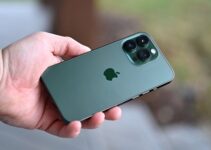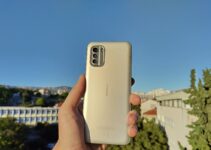The Huawei Mate 40 Pro is out a little over a year after the Chinese telecoms giant was abruptly kicked out of the U.S. Government’s good graces, forcing it to start over with Android.
Huawei’s Mate 40 Pro is the company’s greatest attempt at a Google-free smartphone, but can it compete with market leaders like Samsung, OnePlus, and even Apple?
All You Need To Know Huawei Mate 40 Pro 4G

Maybe, if you’re really into having the latest and greatest features in your mobile device. With its latest and greatest chipset and most competitive cameras to date, Huawei has provided yet another refined experience. Like the P40 Pro before it, this one comes with annoying software restrictions that must be accepted.
- Price: £1,099
- 76-inch Full HD+ (2772 x 1344) display @ 90 frames per second
- Shades: Enigmatic Black and Silver
- System Processing Unit: HiSilicon Kirin 9000
- RAM: 8GB
- Capacity: 256GB
- 50MP primary (f1.9), 20MP cine/ultra-wide (f1.8), 12MP telephoto (f2.8), and a laser depth sensor are all included at the back.
- Optical zoom of 5, digital zoom of up to 50
- Dual 13MP wide-angle (f/2.4) and 3D depth-sensing cameras for the front-facing camera.
- 5G: below 6GHz
- Android 11 and EMUI 11 as the OS.
- Power supply: 4,400 mAH
- Both cable and wireless charging are capable of up to 50 watts of power.
- A 6.41-by-2.97-by-0.35-inch box (162.9 x 75.5 x 9.1 mm)
- 7 ounces, 47 grammes (212g)
Multi-screen collaboration with other Huawei devices may entice productivity-minded customers, and things aren’t as awful as they were in the past thanks to certain alternatives and workarounds Huawei has put in place.
While we were impressed by several aspects of the Huawei Mate 40 Pro, we couldn’t recommend it as your next phone if you’re a typical user.
Read Also:
Price and Release Date:
Once again, the Mate 40 Pro is unavailable in the United States except through international online merchants. Be prepared to spend more than you had anticipated, and research the 4G and 5G bands supported by the model you’re interested in to ensure compatibility with your preferred carrier.
The Mate 40 Pro is more widely available in the United Kingdom. It comes in Black or Mystic Silver with a single 8GB RAM/256GB storage configuration for £1099.99, which is the same price as an iPhone 12 Pro Max with 128GB storage. It’s comparable to the Samsung Galaxy Note 20 (£949) and the Galaxy Note 20 Ultra (£1,179).
Huawei Mate 40 Pro review: Design
The Huawei Mate 40 Pro’s pill-shaped front camera cutout in the top left corner makes it look more like the smaller P40 Pro than the Mate 30 Pro did. The Mate 30’s central notch is less aesthetically pleasing than this method, but it still takes up a lot more space than the typical Android phone’s single punch-hole camera.
Huawei has maintained the display’s spectacular 88-degree bends around the sides, which combine with the phone’s more subtle curvature at the back to create a device that fits comfortably in the palm of your hand. The phone’s thickness and weight of 7.5 ounces make it feel significantly larger than most others I’ve used this year.
Huawei’s new “Space Ring” camera array can be seen when the device is turned over, with the four sensors located in the four corners of a hypothetical square inside the donut hole. It’s a nice nod to the circle of cameras on the Mate 30, but personally I prefer the previous design that doesn’t have that weird hole in the centre.
As a reminder of their collaboration with the German camera and lens manufacturer, Huawei has cleverly utilised the donut hole by inserting the Leica logo there. Huawei’s Mate 40 Pro features the company’s signature minimalist design, and it appears especially sophisticated in the jet black finish.
If you’d like a more striking hue, consider the pearlescent Mystic Silver. The power button, which is red on both colours, is another signature of the Mate series.
A volume rocker can be found right next to it, which is a fascinating addition considering Huawei removed this button from the Mate 30 last year in favour of on-screen volume gestures. You can access them again by double-tapping on either edge, or use the standard phone controls.
Display and Audio:
The Mate 40 Pro has a smaller screen than the 6.78-inch OnePlus 8 Pro or the 6.9-inch Samsung Galaxy S20 Ultra and Galaxy Note 20 Ultra, but its display is still huge for a smartphone. As compared to the Mate 40, those three phones all have higher resolution and refresh rates.
The Full HD display on the Huawei phone can refresh at a maximum of 90 hertz. All the others boast QHD and 120Hz, albeit at the cost of battery life, which Huawei insists is not an issue. I decided to test myself by watching the teaser for the upcoming second season of the dark anthropomorphic animal animation Beastars.
The FHD resolution did not detract from my pleasure of the teasers, which rendered the various fur textures of the characters and the show’s use of bright, flat colours to allude to its manga roots with striking clarity.
During my time with the phone, I found that the larger screen and brighter screen more than made up for the somewhat lower refresh rate. Even in direct sunlight, this screen is suitable for seeing websites, social media, and streaming information, so long as you have a large enough pocket or bag.
I was relieved to hear that Huawei had done away with the weak sub-display speaker prevalent in older phones when I switched to the bluegrass classic “If it Hadn’t Been For Love” by The Steeldrivers.
The speaker has been moved to the top of the phone, where it no longer obstructs the screen and where the sound is clear and well-balanced. But, the speaker’s emphasis on vocals and treble is one reason why I continue to favour the more balanced output of the iPhone 12 Pro.
Huawei Mate 40 Pro Review: Cameras
This is where the capabilities of the Leica-tuned cameras on the Huawei Mate 40 Pro become apparent. A 50MP main camera with Huawei’s proprietary RYYB sensor for improved low-light performance, a 20MP ultrawide camera that doubles as the primary video camera, and a 12MP telephoto with 5x optical zoom and up to 50x digital zoom are all housed on the device’s back.
A laser depth sensor is also included for use with augmented reality and other post-production effects. I toured Paddington’s canals with the Mate 40 Pro and an iPhone 12 Pro for reference. The first photo we took, looking out over Rembrandt Gardens, has the characteristically chilly hues of a Huawei.
The iPhone’s camera captures the fall foliage and green grass of this little public park more beautifully, but it overexposes the sky. The Mate 40 captured the beauty of the evening sky beautifully.
Huawei Mate 40 Pro Review: Performance
The Mate 40’s internal components are designed in a different way than its Android competitors. Huawei opted to employ its own Kirin 9000 CPU rather than the more popular Snapdragon 865 and either 8GB or 12GB of RAM.
You can get the apps you want by cloning them from your old phone, getting APK files from reliable sources, or accessing an alternative app store, all of which Huawei makes easy with their Phone Clone, AppGallery, and Petal Search apps.
While it isn’t as easy as searching in the Play Store and tapping “Download,” the Mate 40 supports pretty much every Android app out there, so long as you’re willing to do without the Google app ecosystem. The Multi-Window function allows you to utilise up to three apps at once, while the “Eyes-On Display” feature mutes notifications and keeps the phone awake if it detects that you’re looking at it.
In addition, there are a number of graphical enhancements that facilitate intuitive navigation of menus and transitions between options. Moreover, Private View has returned to ensure that your alerts remain concealed even if someone other than yourself picks up your phone.
The overall performance measuring app Geekbench 5 is currently not working on the Mate 40 Pro. However, we were able to test the Huawei’s performance when rendering complex visuals by running the Wild Life benchmark from GFX Bench.
An average of 6,116 frames were recorded at a rate of 36.6 FPS. That’s a touch lower than the iPhone 12 Pro Max’s 41 FPS score, but significantly higher than the Galaxy Note 20 Ultra’s 26 FPS result. Although if it can’t compete with Apple’s A14 chip in the iPhone 12 series, this is still a very respectable score, making the Mate 40 the most powerful Android handset we’ve tested.
Keep in mind that the Kirin 9000 is a generation ahead of the Snapdragon 865 found in many 2018 Android flagships, with Huawei’s processor using a 5-nanometer process rather than 7 nm. (Simply put, the smaller process allows for more transistors and thus greater power.)
When the Snapdragon 875 system-on-chip inevitably makes its way into phones at the beginning of next year, we’ll have to see if the Mate 40 Pro can maintain its dominance.
Huawei Mate 40 Pro Review: Software
The Huawei Mate 40 Pro runs the open-source version of Android 11, topped with Huawei’s EMUI 11 interface. Due to U.S. government prohibitions, organisations cannot do business with Huawei, hence the Mate 40 Pro cannot use any Google apps.
No additional Android apps may be downloaded to the phone since it cannot access the Google Play Store. But, there are a number of apps pre-installed, and there are also “recommended folders” that offer a rolling selection of further programme suggestions.
Because there is no app drawer on the Mate 40 Pro, removing apps from the home screens requires deleting them entirely. One thing that really gets under my skin is that, unlike pretty much every other OS out there, EMUI 11 doesn’t include a dark mode scheduling mechanism.
The lack of an automatic option, which has been criticised since EMUI 10 released a year ago, seems like a major omission, despite how simple it is to manually activate via the Quick Settings menu in the notification shade.
Air Gestures and Face Recognition
Outside the app store, EMUI 11 conceals some distinctive improvements over alternative Android skins. For instance, Huawei has carried over the Mate 30’s air gestures functionality. You can now use a pressing gesture to answer calls or play/pause media, slide displays up, down, left, or right to wake the phone, and so on.
The Mate 40 also has a fingerprint sensor embedded in its display, so you can use either method to unlock the phone. Both methods are powered by the same sensor. Once you figure out how far away you should be from the screen, the gestures are remarkably accurate and simple to execute
If you’re the type to prop your phone up on a stand while it’s not in use, or if you’re in an area where you can’t safely use your bare hands, like the kitchen, this is a fantastic solution. But, depending on what you’re doing, the fact that the left and right navigation gestures only work in select apps can be annoying.
Facial recognition on the Mate 40 is solid enough that I rarely need to use the fingerprint sensor. Since Google discontinued Motion Sense with the release of the Pixel 5, no other Android manufacturer has provided a facial recognition system as reliable or secure as this one.
Huawei now has only Apple’s Face ID as competition in this space. Unlocking with your face is as quick on both phones, but the iPhone works from more angles than the Mate 40 Pro.
Read Also:
Battery and Charging
The Mate 40 Pro features a slightly smaller battery than the Mate 30 Pro, coming in at 4,400 mAh as opposed to 4,500 mAh. However the Mate 40 Pro is still a durable device, so raw capacity isn’t everything.
After being used for testing, movie streaming, and app downloads over Wi-Fi for eight hours straight, the Mate 40 still had over sixty percent of its battery life remaining at the end of the night. We haven’t done a thorough battery depletion test on the phone yet, but once we do, we’ll let you know how it fares in comparison to the competition and update this review accordingly.
Huawei’s 66W wired charger is more powerful than the one included with the OnePlus 8T’s 65W charger, putting Huawei ahead of the pack. Without Huawei’s proprietary charger, we were unable to test the Mate 40 Pro’s wireless charging capabilities, which can reach up to 50W, the fastest we’ve seen on a phone to date.
A completely dead Mate 40 Pro reached 84% after 30 minutes of charging, and it was fully charged at the 44-minute mark. Unlike the Huawei, the OnePlus 8T’s dual battery design allows it to charge two cells at a slower speed, so it can get to 93% full in 30 minutes.
The fact that it can be charged quickly is enough to suit the needs of most users, even if it isn’t as fast as the finest charging phone available. Even at this higher rate, the Huawei completely destroys the Samsung Galaxy S20 and Galaxy Note 20’s included 25W standard charger. Meanwhile, the iPhone 12 series requires a separate purchase of Apple’s newest 20W charger.


